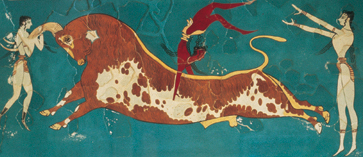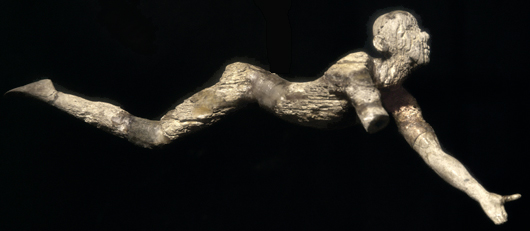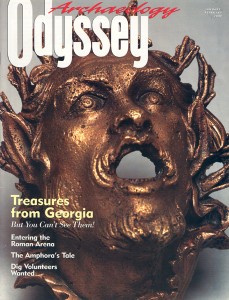Ancient Life: Bull Jumping
It’s taking your life in your hands


A bull snorts and paws the ground—then takes off at full speed with horns pointed at your mid-section. What do you do? Run? Or wait until the last second, grab the bull’s horns and propel yourself over its back, landing in the arms of your intrepid assistant?
For Bronze Age Minoans of the early second millennium B.C., the answer was easy. Bull jumping, a sport that is still practiced in Portugal, seems to have originated in the ancient Near East. When it arrived on Crete, it found a niche in the Minoan tradition of bull worship, and the leaps were originally ceremonial rituals. Like many religious rites, bull jumping eventually lost its ritual significance and became mere entertainment, with little of its cultic tradition intact.
The best illustration of the technique used by the Minoans to leap over bulls is the Taureador Fresco from the palace of Knossos, Crete—the mythological home of the half-human, half-bovine Minotaur. The fresco was heavily reconstructed by Sir Arthur Evans during his excavations at Knossos from 1899 to 1903. Evans’s version shows a woman holding a bull’s horns in preparation for a leap, or to steady the animal for a young man in mid-somersault, who is propelling himself into the arms of his waiting “teammate.” (The 12-inch-long figurine above, found at Knossos and dating to the 16th century B.C., depicts a bull-jumper in mid-leap.)
Already a library member? Log in here.
Institution user? Log in with your IP address.

